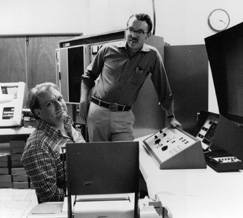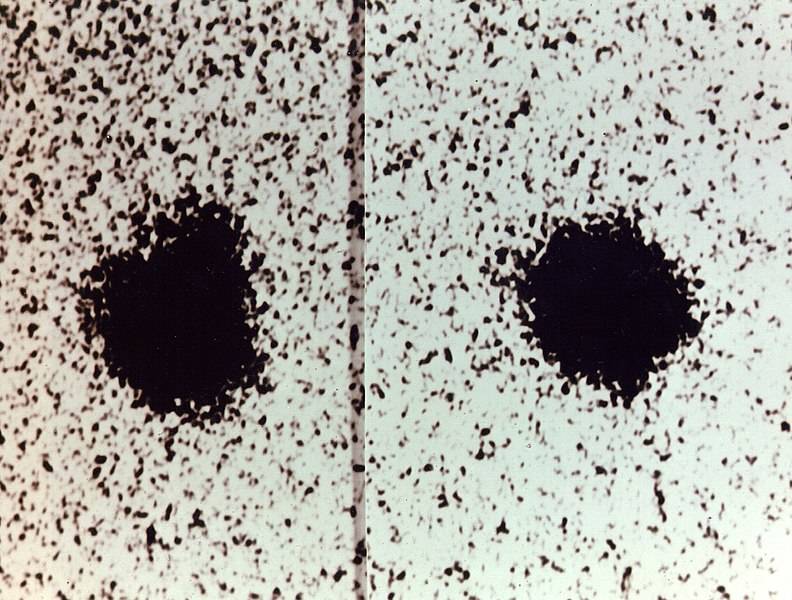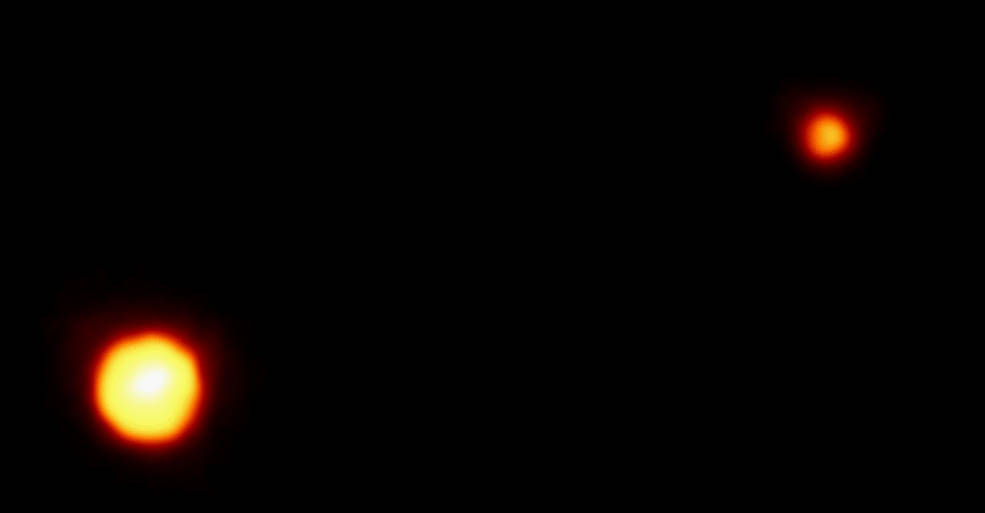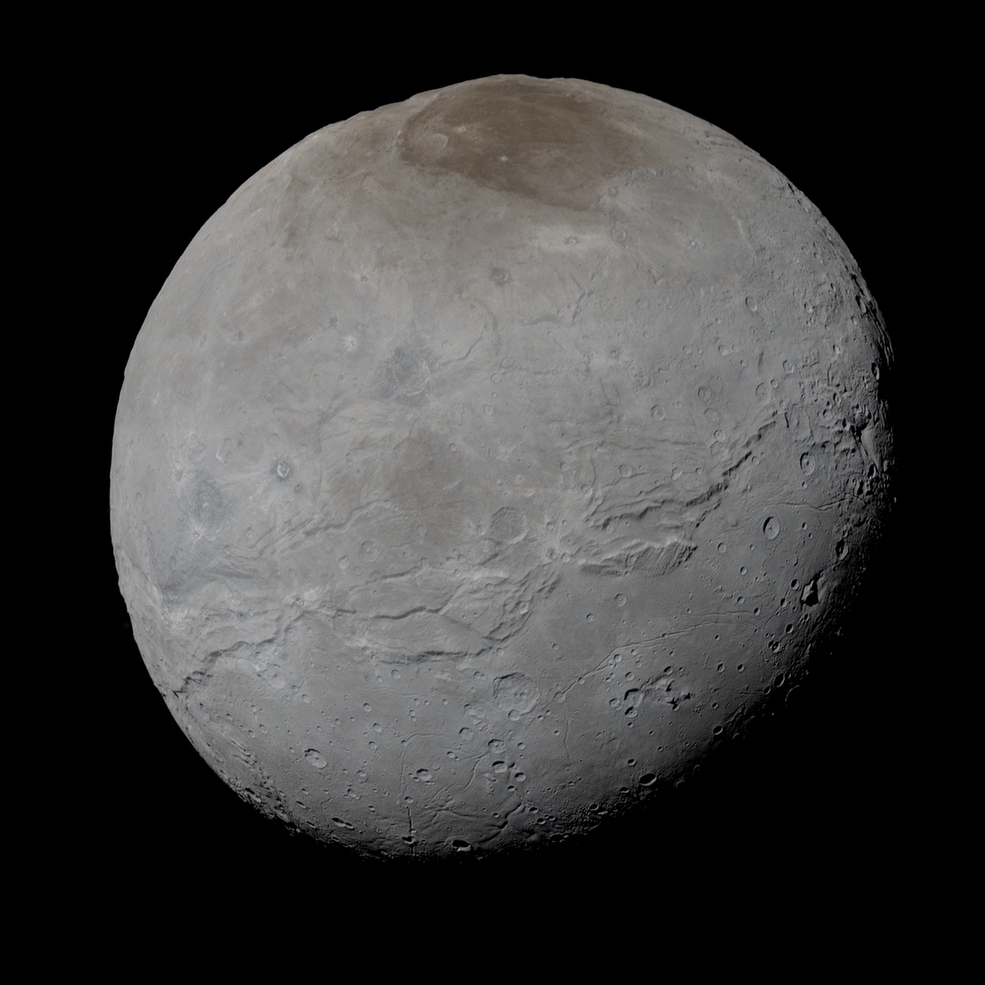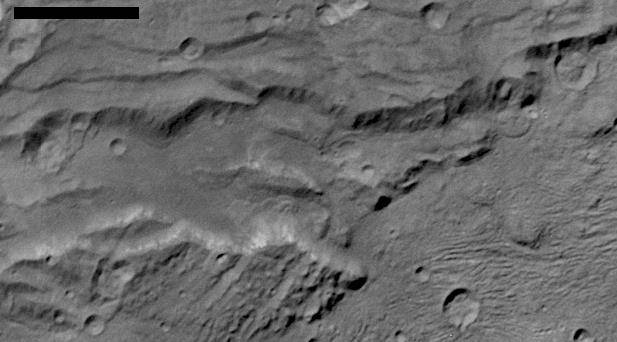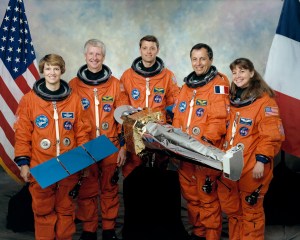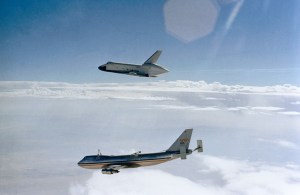In 1978, astronomers considered Pluto as the solar system’s ninth planet. Its great distance from Earth—on average more than three billion miles—meant they knew little about it, including its exact size. On June 22, 1978, U.S. Naval Observatory astronomer James W. Christy, while trying to refine Pluto’s orbital parameters, reviewed photographs of the planet taken with the 61-inch telescope at the observatory’s Flagstaff Station in Arizona. He noticed that Pluto showed an elongation or bulge on some of the photographs. Reviewing images from as far back as 1965, and working with astronomer Robert S. Harrington, they calculated that the photos with the bulge occurred with a predictable frequency that matched what astronomers believed to be Pluto’s rotation, 6.39 hours. Ruling out other possible causes for the bulge, Christy and Harrington correctly concluded that Pluto had a companion orbiting around it at a distance of 12,200 miles. They announced their discovery on July 7 through the International Astronautical Union (IAU). Christy proposed the name Charon for two reasons – first, it sounded a bit like his wife Charlene’s nickname “Char,” and second, in Greek mythology, Charon served as the ferryman in the underworld, closely associated with Hades, or Pluto in Roman mythology. In 1985, Pluto and Charon began a series of mutual eclipses and occultations, and Harrington observed them to occur as predicted, confirming the existing of Charon as Pluto’s moon.
In 1994, the Hubble Space Telescope’s Faint Object Camera took the first photograph that showed Charon as an object separate from Pluto. Later, enhancements to ground-based telescopes also allowed them to show Charon distinct from its parent planet. The discovery of Charon refined our understanding of Pluto’s size—a diameter of 1,477 miles and only 0.25 percent of Earth’s mass. Charon’s diameter of 753 miles makes it the largest moon relative to its home planet in the solar system, and astronomers consider the two as a double planet system orbiting around a common center of mass located between the two bodies. The two are mutually tidally locked, meaning Charon always presents the same face to Pluto and Pluto always presents the same face to Charon. But even the best photographs from Earth or Hubble failed to reveal much about the surfaces of Pluto or Charon. That required a spacecraft to visit these distant worlds and take some close-up photos.
By 1989, robotic spacecraft had visited all the known planets from Mercury to Neptune, leaving only distant Pluto unexplored. Scientists proposed several possible missions over the years, and NASA finally approved the New Horizons mission in 2001 to conduct the first flyby of the small distant planet and its large moon Charon. The Johns Hopkins University’s Applied Physics Laboratory (APL) in Laurel, Maryland, built and operated the spacecraft, and Alan Stern from the Southwest Research Institute in Boulder, Colorado, served as the principal investigator. On Jan. 19, 2006, New Horizons lifted off atop an Atlas V rocket from Cape Canaveral Air Force Station in Florida to begin its nine-year, three-billion-mile journey to Pluto. In August 2006, the IAU changed Pluto’s designation from a planet to a dwarf planet, but New Horizons sailed on, using a gravity assist from Jupiter in February 2007 to speed it on its way to its target. While New Horizons sailed on to Pluto, scientists using the Hubble Space Telescope discovered four much smaller moons also orbiting the dwarf planet. On July 14, 2015, the spacecraft finally reached its target, flying through the Pluto system and completing hundreds of observations with its seven instruments.
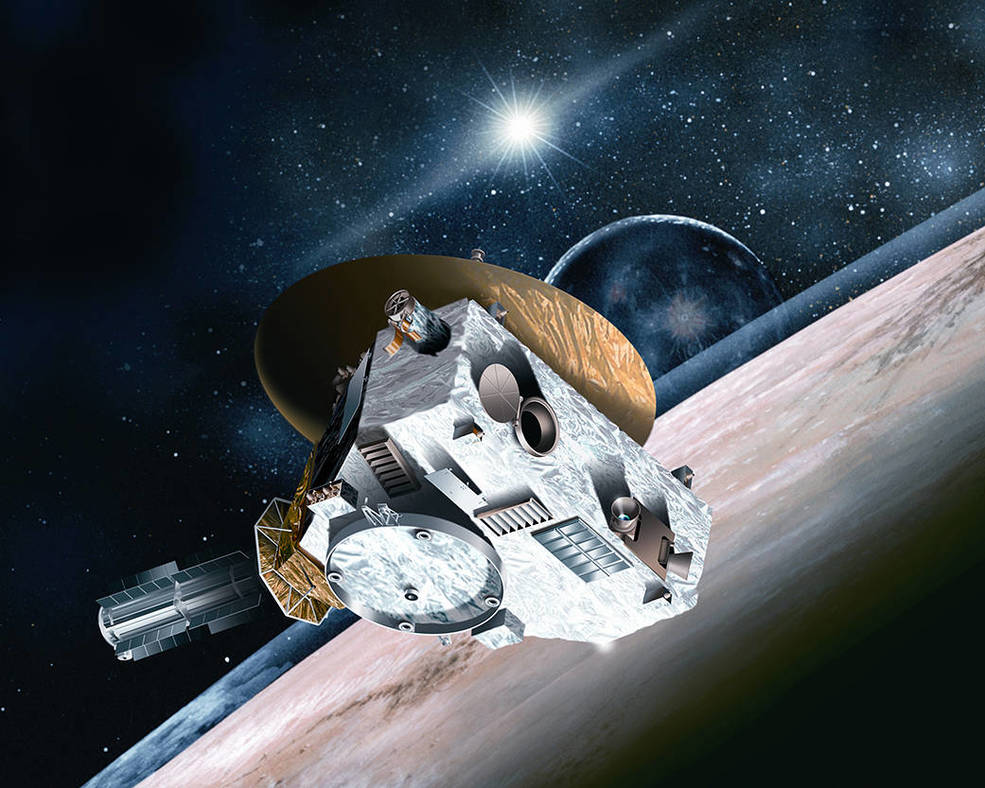
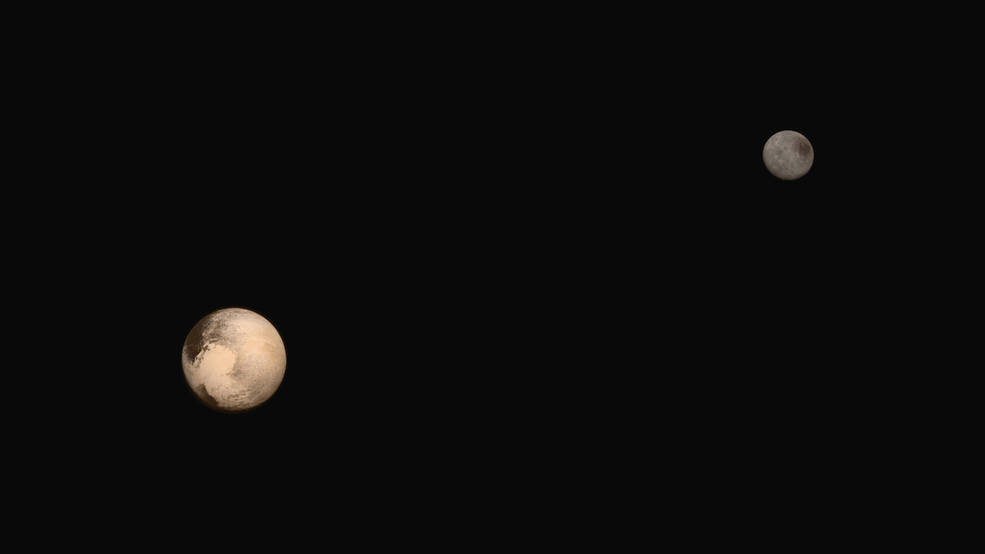
Images from New Horizons revealed Charon’s varied surface, surprisingly complex despite their small sizes and cold temperatures. Jagged mountains and canyons cut through Charon’s Pluto facing surface, dividing a rugged, cratered northern hemisphere from a smoother southern hemisphere. Charon’s surface is mostly dirty water ice, except the polar regions covered with reddish organic material likely produced by gas ejected from Pluto and captured by its moon. Surface temperatures on Charon vary between –396 to –360 degrees Fahrenheit. Scientists continue to analyze the treasure trove of information that New Horizons returned about Charon, Pluto, and space beyond.


























